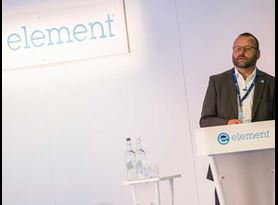ESOS Compliance Using ISO 50001
The deadline for Energy Savings Opportunity Scheme (ESOS) compliance is approaching quickly for large UK organizations. Adopting the ISO 50001 standard will help save your business time and money in meeting the ESOS regulations.
Enacted into British law in 2014, this piece of legislation requires ‘large undertakings’ to audit their energy use and report the details formally every four years. It is administered and policed by the Environment Agency in England, NRW in Wales, SEPA in Scotland, and NIEA in Northern Ireland.
ESOS compliance deadlines
The first deadline was in 2015. As with any new legislation requiring a change to business-as-usual, industry compliance was not perfect. While there are penalties for non-compliance and indeed some organizations were ultimately fined, the objective is not to punish or tax by the backdoor but to affect positive change. In that respect, it has been a success.
The next ESOS deadline is December 5, 2019. If they have not already done so, qualifying organizations need to start preparing now.
ESOS compliance is only required for UK organizations that:
- employ 250 or more staff; or
- have an annual turnover in excess of 50 million euro and an annual balance sheet total in excess of 43 million euro; or
- are overseas companies with a UK registered establishment with 250 or more staff paying income tax in the UK.
If you are such an organization (there are about 7,800 in the UK), there are different ways to achieve compliance: an ESOS Energy Assessment, a Display Energy Certificate, or under the Green Deal. Alternatively, you can take advantage of the enduring and market-differentiating benefits that follow from ISO 50001 certification.
ISO 50001 Energy Management System
There are many reasons to adopt the ISO 50001 Energy Management System standard for your business. By imposing a defined framework for managing energy usage, the international standard facilitates your being able to do more for less energy. An ISO 50001 certification can make your operations more cost-effective, pre-qualify you for valuable tenders and help to reduce your carbon emissions.
Achieving ISO 50001 certification takes time, money and considerable discipline, so the benefits must be worth it. If your organization is uncomplicated and uses relatively little energy, a straight ESOS compliance route might be the best way to go. The process of ESOS compliance is complex, as businesses have to measure total energy consumption, audit to identify cost-effective opportunities to use less energy, and report to the relevant ESOS national scheme administrator.
If that process is challenging due to the nature of your organization, third-party ISO 50001 certification could make better sense. In a world where investor, client, consumer, employee, stakeholder and community expectations are sky-high; and where the negative consequences of climate change increasingly influence energy costs, policy and operations, there are very few large organizations that would not benefit from managing their energy usage for continuous improvement.
How to comply with the ESOS regulation
What does it take to achieve certification successfully? The answer depends to some extent on whether you already have a different management system certificate and on how current the certificate is.
If you are starting from scratch, it will take senior buy-in and committed leadership. You will have to familiarize yourself with the standard, work out where you already meet it, where there are gaps, write a bespoke manual, and implement it. Thereafter, an independent two-stage audit process will tell you whether your efforts qualify you for a certificate, which must be issued from a UKAS accredited certification body such as BMTrada. Certificates last three years, and you undergo annual surveillance audits in between times.
ISO 50001 certification is easier if you already have an ISO management system certificate and gets easier still the more up-to-date it is. For example, many organizations will already be certificated to ISO 9001: Quality Management or ISO 14001: Environmental Management. Familiarity with how they are operated, particularly ISO 14001, will prepare you well for ISO 50001. Furthermore, if these pre-existing certifications are to the latest versions of the standards, you will already have aligned your systems to what is known as Annex SL or the High-Level Structure (HLS), the organizational DNA common to all management systems. The HLS makes the integration from existing to new management systems much simpler.
Benefits of ISO 50001
ISO 50001 has the potential to add considerable value to your organization. The financial return on investment is tangible, counted in significant cost-efficiencies, year on year. Beyond that, there are harder-to-quantify factors, including competitive advantage, reputational boost and the public trust that grows from the responsible use of the energy to minimize greenhouse gas emissions.
An ISO 50001 certificate allows you to comply with the mandatory ESOS Regulations. Be quick, though. In the context of the time it takes to prepare, audit and certificate, the December 5, 2019 deadline is just around the corner.
If you have questions about this regulation, or how we can support you in the process of compliance, contact us today.
Find related Resources
Related Services
Energy Management Systems Awareness Workshop
This workshop will inform delegates about the choices available to meet legislative and statutory regulations, or to just positively impact energy costs and environmental impact within their organization.

Energy Management Systems Certification
Being independently certified to ISO 50001 energy management systems means that you can protect your environmental reputation with your customers and investors plus the wider community.

Environmental Management Systems Certification
ISO 14001 environmental management systems certification helps organizations make their environmental practices more sustainable.

Resources
Discover blog posts, articles, white papers, webinars, and advice from our world-leading testing, inspection, and certification experts.

